Family remember
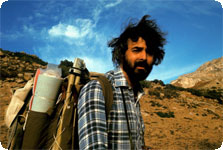 Everything what my father printed in big format, he put on the floor, on the tables and sofas and then he was thinking for a long time, displacing the photos from place to place. At that he thoughtfully twisted his beard, asked my mum to make him a cup of coffee, and us – not to disturb him and not to make noise in the house. Sometimes all the family took part in selection of pictures. For many years my mum started to like photograph so much that also decided to make pictures, and father was a good teacher in this matter for her.
Everything what my father printed in big format, he put on the floor, on the tables and sofas and then he was thinking for a long time, displacing the photos from place to place. At that he thoughtfully twisted his beard, asked my mum to make him a cup of coffee, and us – not to disturb him and not to make noise in the house. Sometimes all the family took part in selection of pictures. For many years my mum started to like photograph so much that also decided to make pictures, and father was a good teacher in this matter for her.
Like this in a family way the series of reportages were born, the photographs for competitions and exhibitions were selected.
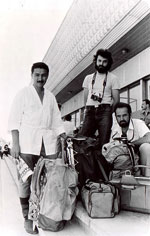 Many moments stuck in my consciousness as pictures. It was snug as a bug in a rug, when at the week-end father, sitting in the arm-chair, in bathing clothes, with a cup of green tea or coffee, as detective, with the magnifying glass examined the negatives (printed in actual film size) and selected the best pictures. And every time he was bringing a mass of impressions from his business trips and was talking about the trips by means of pictures. Photograph was an admiration at home; we organized special evenings for it, argued about it, looking at it for hours.
Many moments stuck in my consciousness as pictures. It was snug as a bug in a rug, when at the week-end father, sitting in the arm-chair, in bathing clothes, with a cup of green tea or coffee, as detective, with the magnifying glass examined the negatives (printed in actual film size) and selected the best pictures. And every time he was bringing a mass of impressions from his business trips and was talking about the trips by means of pictures. Photograph was an admiration at home; we organized special evenings for it, argued about it, looking at it for hours.
In 1990 three camera men Vladimir Dubrovskiy (works and lives in Novosibirsk now), Marat Baltabaev (Moscow reporter now) and Anatoly Rahimbaev organized the expedition to the region of Aral Sea. A series of reportages about Aral region became for my father “carte-de-visite” in photojournalism for the whole decade (from 1990 to 2000). Once in two-three years he visited the scene of tragedy, passed through and lived all those problems which locals came through, caught the difference for the passed time and found new fields for reportage photograph. With the years locals started to recognize him and took him for their own. He brought them Tashkent press, on the pages of which there were published the materials about Aral region with his pictures.
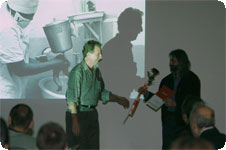 In 1994 UN house in Tashkent became interested with Aral photos and organized the exhibition under the slogan “One land – One Family». And under the patronage of UNESCO in Paris there was arranged a personal photo exhibition “Aral Requiem”. After each trip to Aral father brought great reportage photos, which were shown on different exhibitions. For example, in 1997 the exhibition “International aspects of ecological tragedy of Aral Sea” was arranged in FRG (Saint-Augustine). And in one month Konrad Adenauer Foundation opened ecological exhibition in Bishkek. In 2003 the jury of annual competition “Interphoto” awarded him with the 3rd place for photo project “Central Asia, region of Aral Sea” in the category “Nature and environment”.
In 1994 UN house in Tashkent became interested with Aral photos and organized the exhibition under the slogan “One land – One Family». And under the patronage of UNESCO in Paris there was arranged a personal photo exhibition “Aral Requiem”. After each trip to Aral father brought great reportage photos, which were shown on different exhibitions. For example, in 1997 the exhibition “International aspects of ecological tragedy of Aral Sea” was arranged in FRG (Saint-Augustine). And in one month Konrad Adenauer Foundation opened ecological exhibition in Bishkek. In 2003 the jury of annual competition “Interphoto” awarded him with the 3rd place for photo project “Central Asia, region of Aral Sea” in the category “Nature and environment”.
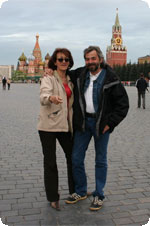 In Internet the works of my farther about Aral are placed at the address of American gallery “Anahita Gallery Inc”.
In Internet the works of my farther about Aral are placed at the address of American gallery “Anahita Gallery Inc”.
When father became interested in medicine, he made pictures in operation rooms, sharing with us his impressions, how unarranged person feels being in the situation well-known for medicine professionals. How the hands are shaking and it is impossible to focus, observing in the objective the lancet tracing. And some time later he was smitten with interest how operated heart taps a rhythm, how responsible is the work of a surgeon.
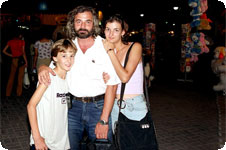 I have been watching the creations of my father for many years and looking at the pictures now, I can certainly say that he liked genre photograph most of all. This is the photograph on which as he said Life – life is in all its displays, feelings and colours. From any reportage photography he selected the most valuable genre pictures. The meaning “genre” was a major factor for him, as the quality mark of worthful picture. Photography method was rather reportage. He did not admit shooting cadres as well as he did not accept computer processing of the pictures. He argued for a long time with his friends-colleagues and took up the position that would never use digital equipment, that the matrix did not reproduce all that colour intensity, which would be possible to reproduce using the film. Just like he did not want to change for colour photography and considered black-and-white photograph as a model till the end. The classicist Henri Cartier-Bresson was always a master of photograph for him, and father shared his opinion and respected him. Pasting over silvery cover of camera by black insulating tape, in order not to meet the eyes of people, he went on the street and “lived”, flew through himself the feelings of people, keeping the brightest impressions on the film. When my father saw a valuable scene, he closed one eye and made a square frame from his hands, or something like a round lens, where he put the planned scene. Then he took his camera and started to make pictures. All that took some seconds. But it was very funny to watch this “scene fitting”.
I have been watching the creations of my father for many years and looking at the pictures now, I can certainly say that he liked genre photograph most of all. This is the photograph on which as he said Life – life is in all its displays, feelings and colours. From any reportage photography he selected the most valuable genre pictures. The meaning “genre” was a major factor for him, as the quality mark of worthful picture. Photography method was rather reportage. He did not admit shooting cadres as well as he did not accept computer processing of the pictures. He argued for a long time with his friends-colleagues and took up the position that would never use digital equipment, that the matrix did not reproduce all that colour intensity, which would be possible to reproduce using the film. Just like he did not want to change for colour photography and considered black-and-white photograph as a model till the end. The classicist Henri Cartier-Bresson was always a master of photograph for him, and father shared his opinion and respected him. Pasting over silvery cover of camera by black insulating tape, in order not to meet the eyes of people, he went on the street and “lived”, flew through himself the feelings of people, keeping the brightest impressions on the film. When my father saw a valuable scene, he closed one eye and made a square frame from his hands, or something like a round lens, where he put the planned scene. Then he took his camera and started to make pictures. All that took some seconds. But it was very funny to watch this “scene fitting”.
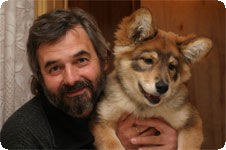 The work in Russian photography started from numerous trips by trains and airplanes “Tashkent-Moscow”. For a long time father worked for International Association of Journalists “ASMO-PRESS" (research and information almanacs). In those years he traveled around all Russia, and a series of reportages about agricultural complex and machine industry was the result of it. The work in “Izvestiya” gave him a lot of interesting and serious photo-reportages and at the same time took his power, spent on endless filming of press conferences, new buildings of Moscow and Duma congresses. This is newspaper routine, from which there is no place to hide for staff journalists. The meeting of my father with famous camera man from “Magnum” agency George Pinkhasov became symbolic for him. That master class, which was demonstrated by Pinkhasov, rendered a profound effect on future style of father’s photograph activity. Father was very emotional. I would say, a man of feeling. And he came back from filming under deep impression. None of the filming left him íå indifferent and it was possible to feel it from his reportages. Rescue of people from under the wreckages of Transvaal-park; smog, involving Moscow; sacrifices of terroristic acts, grief of relatives – were reflected in his soul and heart with feelings and sympathy. And meetings with the actors, film directors brought him a feeling of happiness and pleasure. He loved people and respected them very much.
The work in Russian photography started from numerous trips by trains and airplanes “Tashkent-Moscow”. For a long time father worked for International Association of Journalists “ASMO-PRESS" (research and information almanacs). In those years he traveled around all Russia, and a series of reportages about agricultural complex and machine industry was the result of it. The work in “Izvestiya” gave him a lot of interesting and serious photo-reportages and at the same time took his power, spent on endless filming of press conferences, new buildings of Moscow and Duma congresses. This is newspaper routine, from which there is no place to hide for staff journalists. The meeting of my father with famous camera man from “Magnum” agency George Pinkhasov became symbolic for him. That master class, which was demonstrated by Pinkhasov, rendered a profound effect on future style of father’s photograph activity. Father was very emotional. I would say, a man of feeling. And he came back from filming under deep impression. None of the filming left him íå indifferent and it was possible to feel it from his reportages. Rescue of people from under the wreckages of Transvaal-park; smog, involving Moscow; sacrifices of terroristic acts, grief of relatives – were reflected in his soul and heart with feelings and sympathy. And meetings with the actors, film directors brought him a feeling of happiness and pleasure. He loved people and respected them very much.
Father was very attentive, wise and honest person. And he instilled these qualities to us with Nazar (my younger brother). We could not see him for month or two, he went on business trips, at first geological, then with photo camera in his hands, but we were always waiting impatiently for his return.
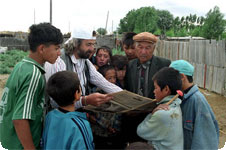 I remember how we went to meet father after work. It was impossible to mix up his walking with anyone else. And his long hair, uncurling in the wind. And heavy coffer on his shoulder. When we saw him, we ran with Nazar chasing each other, fell on his neck and went home happy.
I remember how we went to meet father after work. It was impossible to mix up his walking with anyone else. And his long hair, uncurling in the wind. And heavy coffer on his shoulder. When we saw him, we ran with Nazar chasing each other, fell on his neck and went home happy.
Every morning in our family started brightly, even if it was gloomy behind the window. Father liked toasts; he cooked them in a very delicious way. And the most important thing was that each of us woke up feeling the smell of genuine coffee, which was spread over the flat. These associations deposited somewhere in my mind. I turn on the music, which my father liked, fry toasts and make coffee. And at this time I believe that father is near us.
Father trusted everyone and caused the trust of others. He always said with smile: “I was stopped in none of the embassies, ministries, metro...and I carry huge coffers and bags with equipment ...”
His pilaf, which he cooked for birthday parties of his friends, was very appetizing and really Uzbek!
His unordinary appearance - long pepper-and-salt hair, beard and bright eyes – stuck to people’s memory.
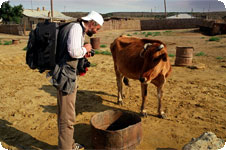 A sense of pride in father brings the respect of the colleagues to him. I have never heard any bad word about my father as about the person, and about his professionalism. People respect and make much of him. And I’m proud of my father. I visited with him the editorial offices of Tashkent newspapers, when I was a small girl, and then, when had practice in journalism. And in Moscow we worked in one building of “Izvestiya”.
A sense of pride in father brings the respect of the colleagues to him. I have never heard any bad word about my father as about the person, and about his professionalism. People respect and make much of him. And I’m proud of my father. I visited with him the editorial offices of Tashkent newspapers, when I was a small girl, and then, when had practice in journalism. And in Moscow we worked in one building of “Izvestiya”.
My grandfather, working as art director on Uzbekfilm motion picture studio, took little Tolya very often for filming. Finishing school, my future father thought about entering cameraman department. But grandpa discommended such decision, said as cut that he did not see a talent for it. Many years later father cooperated with German motion picture studio on filming of “While we can stand of the feet”. He was the photographer of this movie everywhere where the filming took place: Tashkent, Karelia, Germany. He did not become a cameraman, but the viewing of world throughout the lens, as it turned out, was fundamental for him. He often searched in his memory the words of his father and pronounced with sadness: “If my father could see my works”. He also lost his father very early.

















 Everything what my father printed in big format, he put on the floor, on the tables and sofas and then he was thinking for a long time, displacing the photos from place to place. At that he thoughtfully twisted his beard, asked my mum to make him a cup of coffee, and us – not to disturb him and not to make noise in the house. Sometimes all the family took part in selection of pictures. For many years my mum started to like photograph so much that also decided to make pictures, and father was a good teacher in this matter for her.
Everything what my father printed in big format, he put on the floor, on the tables and sofas and then he was thinking for a long time, displacing the photos from place to place. At that he thoughtfully twisted his beard, asked my mum to make him a cup of coffee, and us – not to disturb him and not to make noise in the house. Sometimes all the family took part in selection of pictures. For many years my mum started to like photograph so much that also decided to make pictures, and father was a good teacher in this matter for her.
 Many moments stuck in my consciousness as pictures. It was snug as a bug in a rug, when at the week-end father, sitting in the arm-chair, in bathing clothes, with a cup of green tea or coffee, as detective, with the magnifying glass examined the negatives (printed in actual film size) and selected the best pictures. And every time he was bringing a mass of impressions from his business trips and was talking about the trips by means of pictures. Photograph was an admiration at home; we organized special evenings for it, argued about it, looking at it for hours.
Many moments stuck in my consciousness as pictures. It was snug as a bug in a rug, when at the week-end father, sitting in the arm-chair, in bathing clothes, with a cup of green tea or coffee, as detective, with the magnifying glass examined the negatives (printed in actual film size) and selected the best pictures. And every time he was bringing a mass of impressions from his business trips and was talking about the trips by means of pictures. Photograph was an admiration at home; we organized special evenings for it, argued about it, looking at it for hours.
 In 1994 UN house in Tashkent became interested with Aral photos and organized the exhibition under the slogan “One land – One Family». And under the patronage of UNESCO in Paris there was arranged a personal photo exhibition “Aral Requiem”. After each trip to Aral father brought great reportage photos, which were shown on different exhibitions. For example, in 1997 the exhibition “International aspects of ecological tragedy of Aral Sea” was arranged in FRG (Saint-Augustine). And in one month Konrad Adenauer Foundation opened ecological exhibition in Bishkek. In 2003 the jury of annual competition “Interphoto” awarded him with the 3rd place for photo project “Central Asia, region of Aral Sea” in the category “Nature and environment”.
In 1994 UN house in Tashkent became interested with Aral photos and organized the exhibition under the slogan “One land – One Family». And under the patronage of UNESCO in Paris there was arranged a personal photo exhibition “Aral Requiem”. After each trip to Aral father brought great reportage photos, which were shown on different exhibitions. For example, in 1997 the exhibition “International aspects of ecological tragedy of Aral Sea” was arranged in FRG (Saint-Augustine). And in one month Konrad Adenauer Foundation opened ecological exhibition in Bishkek. In 2003 the jury of annual competition “Interphoto” awarded him with the 3rd place for photo project “Central Asia, region of Aral Sea” in the category “Nature and environment”.
 In Internet the works of my farther about Aral are placed at the address of American gallery
In Internet the works of my farther about Aral are placed at the address of American gallery  I have been watching the creations of my father for many years and looking at the pictures now, I can certainly say that he liked genre photograph most of all. This is the photograph on which as he said Life – life is in all its displays, feelings and colours. From any reportage photography he selected the most valuable genre pictures. The meaning “genre” was a major factor for him, as the quality mark of worthful picture. Photography method was rather reportage. He did not admit shooting cadres as well as he did not accept computer processing of the pictures. He argued for a long time with his friends-colleagues and took up the position that would never use digital equipment, that the matrix did not reproduce all that colour intensity, which would be possible to reproduce using the film. Just like he did not want to change for colour photography and considered black-and-white photograph as a model till the end. The classicist Henri Cartier-Bresson was always a master of photograph for him, and father shared his opinion and respected him. Pasting over silvery cover of camera by black insulating tape, in order not to meet the eyes of people, he went on the street and “lived”, flew through himself the feelings of people, keeping the brightest impressions on the film. When my father saw a valuable scene, he closed one eye and made a square frame from his hands, or something like a round lens, where he put the planned scene. Then he took his camera and started to make pictures. All that took some seconds. But it was very funny to watch this “scene fitting”.
I have been watching the creations of my father for many years and looking at the pictures now, I can certainly say that he liked genre photograph most of all. This is the photograph on which as he said Life – life is in all its displays, feelings and colours. From any reportage photography he selected the most valuable genre pictures. The meaning “genre” was a major factor for him, as the quality mark of worthful picture. Photography method was rather reportage. He did not admit shooting cadres as well as he did not accept computer processing of the pictures. He argued for a long time with his friends-colleagues and took up the position that would never use digital equipment, that the matrix did not reproduce all that colour intensity, which would be possible to reproduce using the film. Just like he did not want to change for colour photography and considered black-and-white photograph as a model till the end. The classicist Henri Cartier-Bresson was always a master of photograph for him, and father shared his opinion and respected him. Pasting over silvery cover of camera by black insulating tape, in order not to meet the eyes of people, he went on the street and “lived”, flew through himself the feelings of people, keeping the brightest impressions on the film. When my father saw a valuable scene, he closed one eye and made a square frame from his hands, or something like a round lens, where he put the planned scene. Then he took his camera and started to make pictures. All that took some seconds. But it was very funny to watch this “scene fitting”.
 The work in Russian photography started from numerous trips by trains and airplanes “Tashkent-Moscow”. For a long time father worked for International Association of Journalists “ASMO-PRESS" (research and information almanacs). In those years he traveled around all Russia, and a series of reportages about agricultural complex and machine industry was the result of it. The work in “Izvestiya” gave him a lot of interesting and serious photo-reportages and at the same time took his power, spent on endless filming of press conferences, new buildings of Moscow and Duma congresses. This is newspaper routine, from which there is no place to hide for staff journalists. The meeting of my father with famous camera man from “Magnum” agency George Pinkhasov became symbolic for him. That master class, which was demonstrated by Pinkhasov, rendered a profound effect on future style of father’s photograph activity. Father was very emotional. I would say, a man of feeling. And he came back from filming under deep impression. None of the filming left him íå indifferent and it was possible to feel it from his reportages. Rescue of people from under the wreckages of Transvaal-park; smog, involving Moscow; sacrifices of terroristic acts, grief of relatives – were reflected in his soul and heart with feelings and sympathy. And meetings with the actors, film directors brought him a feeling of happiness and pleasure. He loved people and respected them very much.
The work in Russian photography started from numerous trips by trains and airplanes “Tashkent-Moscow”. For a long time father worked for International Association of Journalists “ASMO-PRESS" (research and information almanacs). In those years he traveled around all Russia, and a series of reportages about agricultural complex and machine industry was the result of it. The work in “Izvestiya” gave him a lot of interesting and serious photo-reportages and at the same time took his power, spent on endless filming of press conferences, new buildings of Moscow and Duma congresses. This is newspaper routine, from which there is no place to hide for staff journalists. The meeting of my father with famous camera man from “Magnum” agency George Pinkhasov became symbolic for him. That master class, which was demonstrated by Pinkhasov, rendered a profound effect on future style of father’s photograph activity. Father was very emotional. I would say, a man of feeling. And he came back from filming under deep impression. None of the filming left him íå indifferent and it was possible to feel it from his reportages. Rescue of people from under the wreckages of Transvaal-park; smog, involving Moscow; sacrifices of terroristic acts, grief of relatives – were reflected in his soul and heart with feelings and sympathy. And meetings with the actors, film directors brought him a feeling of happiness and pleasure. He loved people and respected them very much.
 I remember how we went to meet father after work. It was impossible to mix up his walking with anyone else. And his long hair, uncurling in the wind. And heavy coffer on his shoulder. When we saw him, we ran with Nazar chasing each other, fell on his neck and went home happy.
I remember how we went to meet father after work. It was impossible to mix up his walking with anyone else. And his long hair, uncurling in the wind. And heavy coffer on his shoulder. When we saw him, we ran with Nazar chasing each other, fell on his neck and went home happy.
 A sense of pride in father brings the respect of the colleagues to him. I have never heard any bad word about my father as about the person, and about his professionalism. People respect and make much of him. And I’m proud of my father. I visited with him the editorial offices of Tashkent newspapers, when I was a small girl, and then, when had practice in journalism. And in Moscow we worked in one building of “Izvestiya”.
A sense of pride in father brings the respect of the colleagues to him. I have never heard any bad word about my father as about the person, and about his professionalism. People respect and make much of him. And I’m proud of my father. I visited with him the editorial offices of Tashkent newspapers, when I was a small girl, and then, when had practice in journalism. And in Moscow we worked in one building of “Izvestiya”.
















